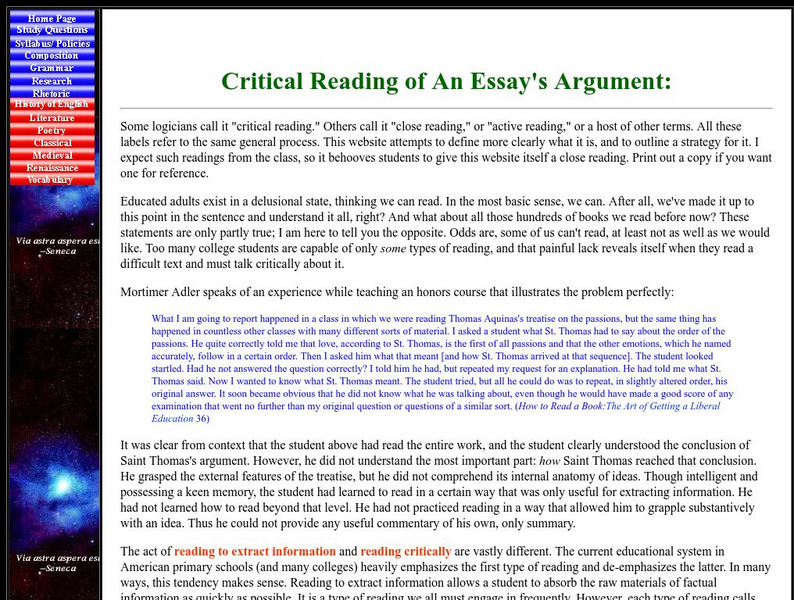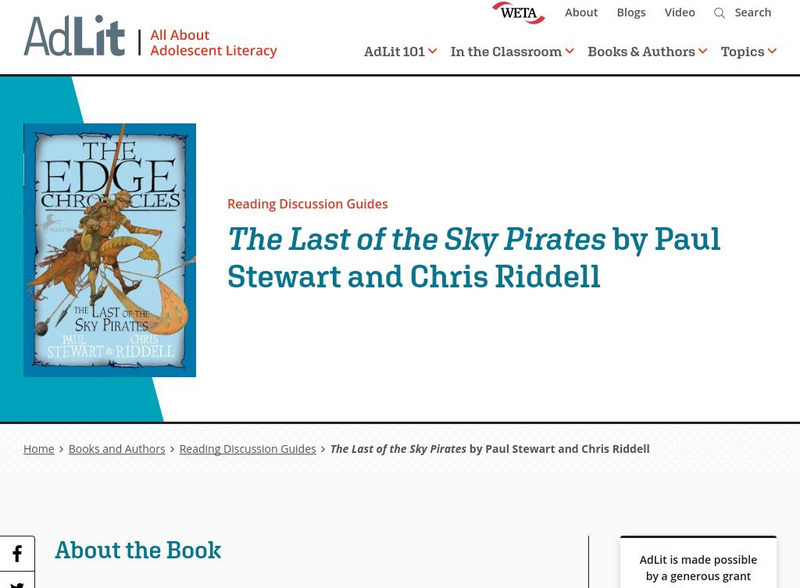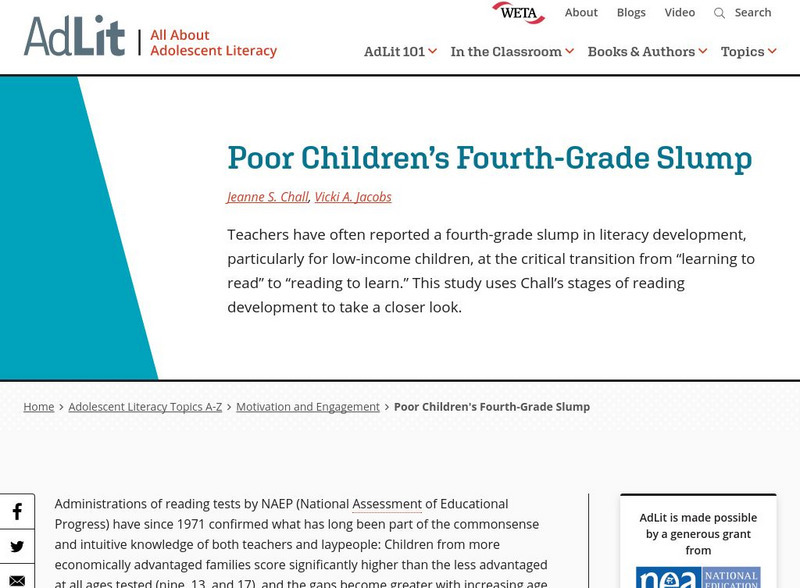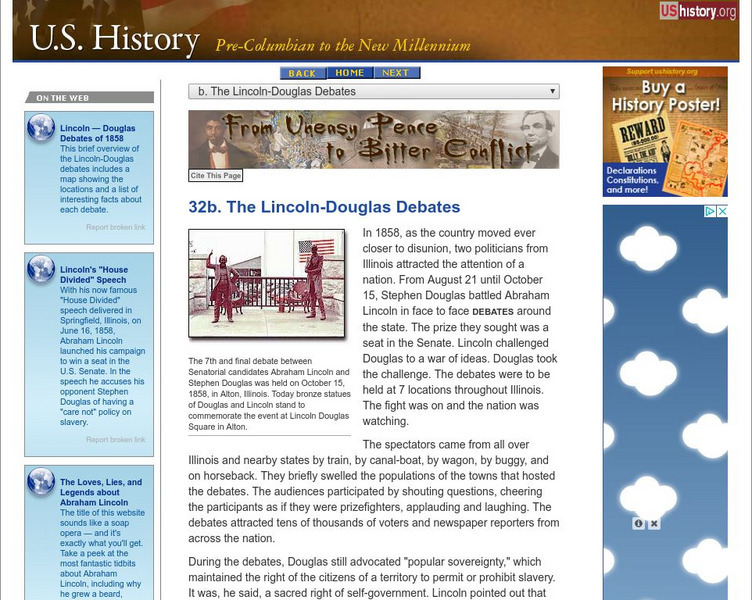Hi, what do you want to do?
Curated OER
Education Evaluation
Eleventh graders examine their human right to an education. In this American Law lesson plan, 11th graders evaluate how well the world is doing when it comes to providing a free, equal, quality education to our youth. ...
Other
Carson Newman College: Critical Reading of an Essay's Argument
Extensive examination of what it means to critically read an argument. This process is sometimes called "critical reading," or "close reading," or "active reading." First the differences between reading to extract information and reading...
Reading Rockets
Reading Rockets: Goals for First Grade: Early Reading and Writing
Children go through certain phases of reading development from preschool through third grade- from exploration of books to independent reading. Find out what children at the first-grade phase should be able to do, and what teachers and...
AdLit
Ad lit.org: Reading Discussion Guide: The Last of the Sky Pirates
Fifty years after Captain Twig severed the anchor chain securing the floating rock of Sanctaphrax to Undertown, all is not well in the great floating city or the urban sprawl of Undertown. Rook Barkwater is selected as a Librarian Knight...
National Endowment for the Arts
National Endowment for the Arts: The Big Read: Wilder: Bridge of San Luis Rey
A comparison of Thornton Wilder's novel The Bridge of San Luis Rey and his stage play Our Town, with historical information, author biography, discussion questions, and a ten-lesson unit of study including project ideas and essay topics....
University of Guelph
Canada's Aquatic Environments: Reproduction
A three-page introduction to reproduction in amphibians can be found at this site. Read about the various methods of reproduction, and what happens after the eggs are laid. There is also a section that shows the growth/development stages...
AdLit
Ad lit.org: Poor Children's Fourth Grade Slump
Teachers have often reported a fourth-grade slump in literacy development, particularly for low-income children, at the critical transition from "learning to read" to "reading to learn." This study uses Chall's stages of reading...
Books in the Classroom
Carol Hurst's Children's Literature Site: Eric Carle
What do you know about Eric Carle, the author? This Carol Hurst site highlights some interesting facts about this author's life and refers to some of his books.
University of Groningen
American History: Biographies: Alexander Hamilton
This site is provided for by the University of Groningen. Alexander Hamilton represented the growing movement towards a strong national government. Read the beginning stages of the nationalist movement, the conflicting ideas of state...
Independence Hall Association
U.s. History: The Lincoln Douglas Debates
The Lincoln-Douglas debates in 1858 exemplified the rift in the nation concerning the issue of slavery and who should be able to determine whether states were free or slave. Read about this war of ideas that moved from the stage in...
Tech4Learning
Tech4 Learning: Creative Educator: Not Your Average Portfolio
As the agent for a famous person you are studying, it is your job to develop a portfolio for him or her that will help them showcase specific skills and accomplishments to potential employers. This project sets the stage for...















